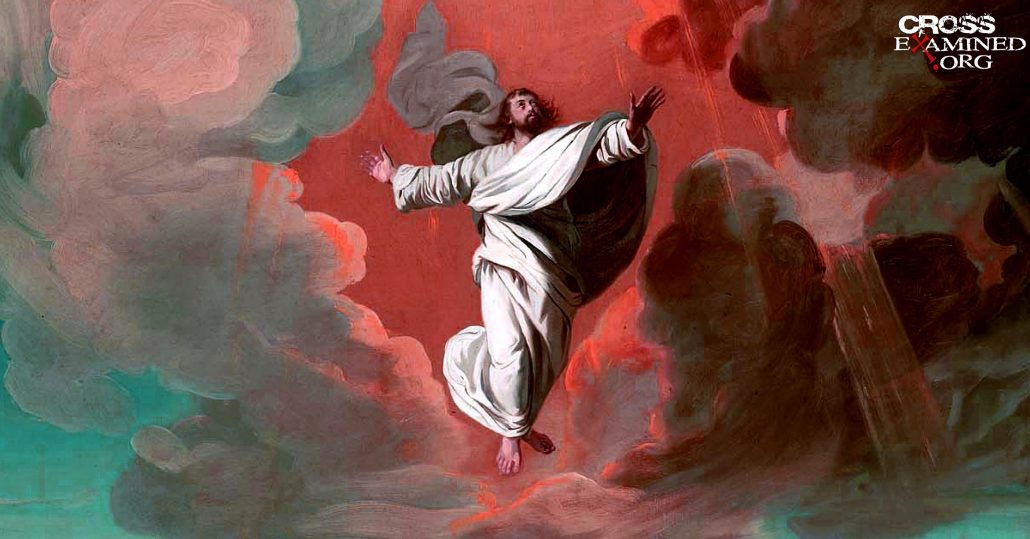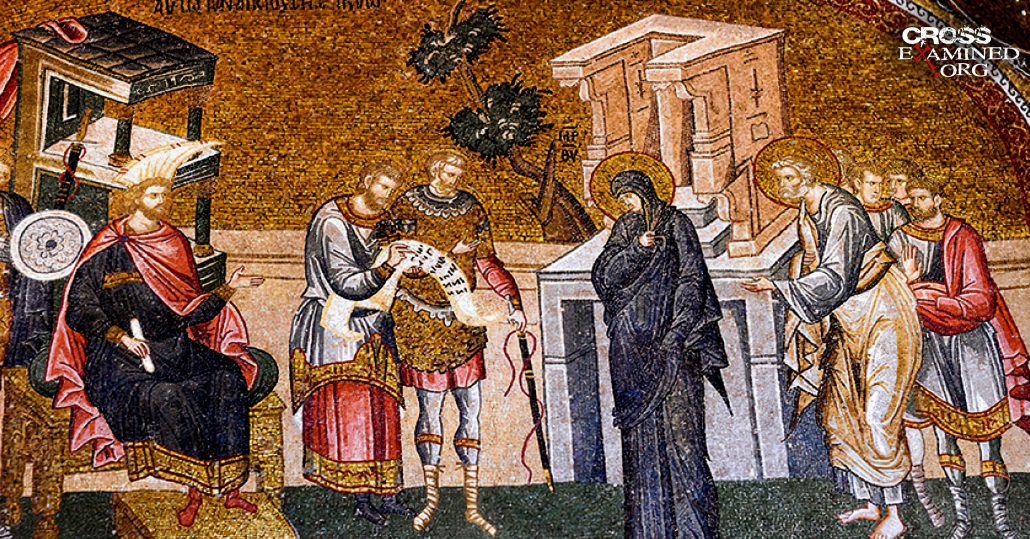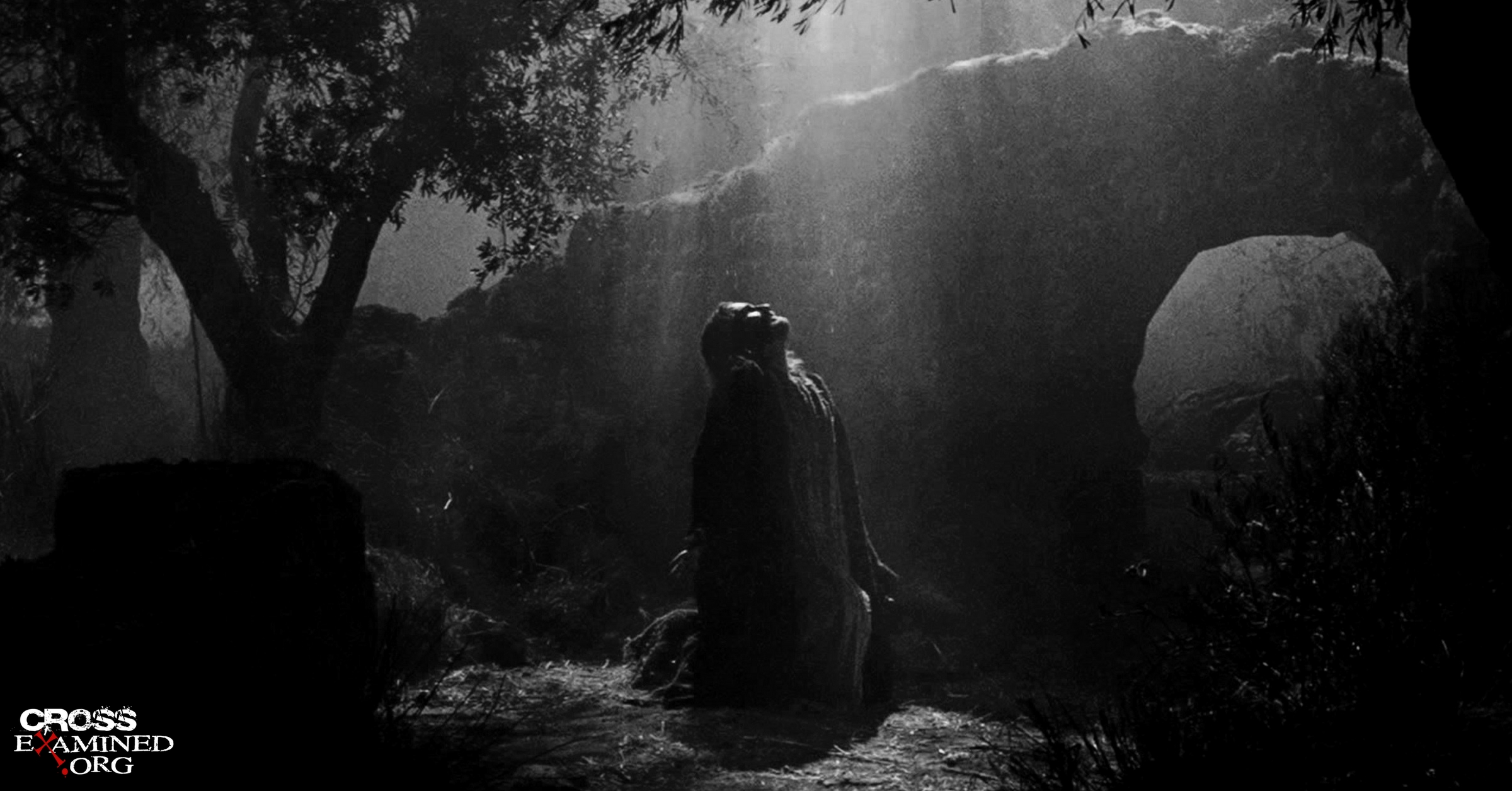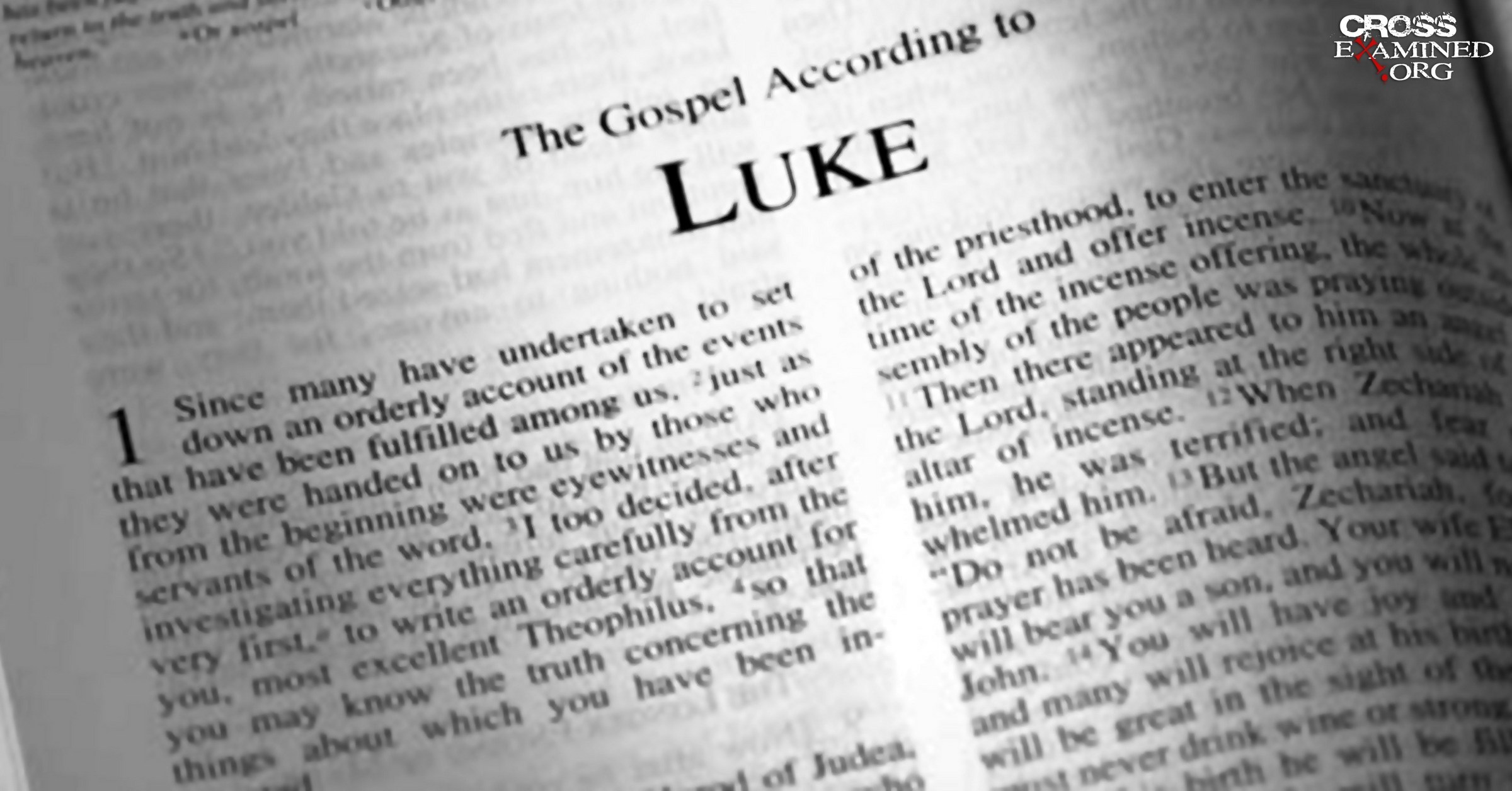Bart Ehrman says that the author of Luke can’t seem to get the story of the Ascension of Jesus right. In his Gospel, Luke says that Jesus ascended into heaven the day of his resurrection. In The Acts of the Apostles, Jesus hung around for 40 days before leaving his disciples. Dr. Ehrman writes in his blog: 
“In Luke 24 (you can read it for yourself and see) Jesus rises from the dead, on that day meets with his disciples, and then, again that day, he ascends to heaven from the town of Bethany. But when you read Acts 1, written by the same author, you find that Jesus did not ascend on that day or that place. Jesus instead spends forty days with his disciples proving to them that he had been raised from the dead (it’s not clear why he would have to prove it! Let alone do so for forty days!), and only then – forty days after his resurrection – does he ascend. And here he ascends not from Bethany but Jerusalem. Luke tells the same story twice, and in two radically different ways. Historical accuracy does not appear to be his major concern.”
Luke And Compression
But there’s a problem here. Luke doesn’t say Jesus’ ascension took place on the same day as the resurrection. There are no indicators of time in the account of the stories. What Luke is doing is using a literary device called compression, which is a standard rhetorical method for the reporting of the time. Compression is taking a longer storyline and putting it into a brief form.
As philosopher Tim McGrew points out, other ancient historians have used this device, including Sallust, Lucian, Cicero, and Quintillian. (Historiae, Vera Historia 56-57, De Orateore 3.27.104-105, Institutio Oratoria 8.4)
Luke uses this technique elsewhere. Paul tells us he went to Arabia for three years after his conversion. Let’s read Galatians 1:16-20:
“I was pleased to reveal his Son to me, in order that I might preach him among the Gentiles, I did not immediately consult with anyone; nor did I go up to Jerusalem to those who were apostles before me, but I went away into Arabia, and returned again to Damascus. Then after three years, I went up to Jerusalem to visit Cephas and remained with him for fifteen days. But I saw none of the other apostles except James the Lord’s brother. (In what I am writing to you, before God, I do not lie!)”
But if we read Acts 9:23-26 at face value, it seems like Paul goes directly into Jerusalem:
“When many days had passed, the Jews plotted to kill him, but their plot became known to Saul. They were watching the gates day and night in order to kill him, but his disciples took him by night and let him down through an opening in the wall, lowering him in a basket. And when he had come to Jerusalem, he attempted to join the disciples. And they were all afraid of him, for they did not believe that he was a disciple.
But this isn’t a contradiction. Just how long of a period is ‘many days’? If we’re only reading Acts, it doesn’t necessarily feel like a 3-year period, although it certainly could be. (See 1 Kings 2:38-39) So what about the journey to Arabia? Luke doesn’t mention it, but that doesn’t necessarily contradict Paul’s story in Galatians. This trip may have happened within Luke’s ‘many days’ in Acts 9:23, and Luke omits it.
This is an example of Luke taking related events where he omits time as well as some of the details. If we aren’t reading carefully we can assume they’re totally complete.
Luke also leaves a 4-year gap between Acts 12 and 13, and he also omits Jesus’ family trip to Egypt that we find in Matthew. Luke isn’t claiming to give a total account of Jesus’ life. That’s not how ancient biography works.
Compression And Other Gospel Writers
Moreover, Luke wasn’t the only Gospel writer to use such a technique. Matthew used compression in the story of the centurion’s servant. He omits all remarks of the Jewish elders and the centurion’s friends who served as go-betweens in Luke’s account.
He compresses the story by leaving out these extra people and stages of the narrative. (Compare Matthew 8:5-13 with Luke 7:10) Some have tried to say this is a contradiction, but they just don’t understand compression.
Likewise, Matthew 9:18-26 compresses the story of the healing of Jairus’ daughter. Mark gives us a much longer version of the story with two different stages of development. In the first stage, Jairus’ daughter was sick to the point of death. In the second stage, the messengers come and tell Jairus that his little girl just died.
Matthew gets to the point — the daughter dies, and Jesus raises her back to life. Matthew takes 176 words (at least in our English Bible) for what Mark takes 481 words to tell us. Ehrman has tried to complain that these accounts are also irreconcilable but they’re not when we understand that Matthew is telescoping the events.
But What About The Location Of The Ascension?
But Bart isn’t done. Remember that in the above quote, he also said Luke gets confused with the location of the ascension. But let’s look at the text for ourselves rather than accept Ehrman’s portrayal of it.
Here’s Luke 24:50-51:
“And he led them out as far as Bethany, and lifting up his hands he blessed them. While he blessed them, he parted from them and was carried up into heaven.”
And here’s Acts 1:12:
“Then they returned to Jerusalem from the mount called Olivet, which is near Jerusalem, a Sabbath day’s journey away.”
Let’s take a look at a map:
 Bethany is on the southeastern slopes of the Mount of Olives. We know Bethany was one of Jesus’ favorite places as it was the home of Mary, Martha, and Lazarus. The Book of Acts tells us that they returned from the Mount of Olives. Luke tells us the ascension happened in Bethany.
Bethany is on the southeastern slopes of the Mount of Olives. We know Bethany was one of Jesus’ favorite places as it was the home of Mary, Martha, and Lazarus. The Book of Acts tells us that they returned from the Mount of Olives. Luke tells us the ascension happened in Bethany. Um…where exactly is the contradiction here? It at least feels like Dr. Ehrman is looking for trouble where there is none.
Does Luke Contradict Matthew? Go To Galilee Or Stay In Jerusalem?
But Dr. Ehrman has one more parting shot. In his book, Jesus, Interrupted he says that Matthew and Luke disagree regarding the ascension.
In Matthew’s version, the disciples are told to go to Galilee to meet Jesus, and they immediately do so. He appears to them there and gives them their final instruction. But in Luke, the disciples are not told to go to Galilee. They are told that Jesus had foretold his resurrection while he was in Galilee (during his public ministry). And they never leave Jerusalem—in the southern part of Israel, a different region from Galilee, in the north. On the day of the resurrection Jesus appears to two disciples on the “road to Emmaus” (24:13–35); later that day these disciples tell the others what they have seen, and Jesus appears to all of them (24:36–49), and then Jesus takes them to Bethany on the outskirts of Jerusalem 1s gives them their instructions and ascends to heaven. In Luke’s next volume, Acts, we’re told that the disciples are in fact explicitly told by Jesus after his resurrection not to leave Jerusalem (Acts 1:4), but to stay there until they receive the Holy Spirit on the Day of Pentecost, fifty days after Passover. After giving his instructions, Jesus then ascends to heaven. The disciples do stay in Jerusalem until the Holy Spirit comes (Acts 2). And so the discrepancy: If Matthew is right, that the disciples immediately go to Galilee and see Jesus ascend from there, how can Luke be right that the disciples stay in Jerusalem the whole time, see Jesus ascend from there, and stay on until the day of Pentecost?
p. 49
The problem here is Matthew never says Jesus ascends right then and there. Read the text for yourself:
“Then the eleven disciples went to Galilee, to the mountain where Jesus had told them to go. When they saw him, they worshiped him; but some doubted. Then Jesus came to them and said, “All authority in heaven and on earth has been given to me. Therefore go and make disciples of all nations, baptizing them in the name of the Father and of the Son and of the Holy Spirit, and teaching them to obey everything I have commanded you. And surely I am with you always, to the very end of the age.”
Bart simply assumes that the ascension happens here because this is where Matthew concludes his Gospel, but the ascension actually isn’t actually in the passage.
Furthermore, Dr. Ehrman also assumes that Jesus commanded his apostles to “stay in the city of Jerusalem until you have been clothed with power from on high” on the same day that he rose. We all know that commonly the four evangelists jumped around from story to story without always giving the actual time or precise order of when things were done or taught. Luke leaves out the post-resurrection appearances in Galilee mentioned by Matthew, but he never says Jesus remained only in Jerusalem from the day he rose until his ascension. Ehrman seems to think that every telling of every event should include every important detail about it. But why should we assume that?
Remember that Luke is compressing the story. While we have clear time indications (Luke 24:1, 13, 21, 29, 33) that the first 43 verses took place on the day of Christ’s resurrection, the sayings found in Luke 24:44-49 could have taken place at any time during the five weeks that Jesus stuck around in Acts 1:1-12. Luke gives no explicit time indicator when these sayings were made.
Don’t Doubt Luke. Doubt Bart.
Luke, possibly running low out on his scroll, gets down to the nitty-gritty and telescopes his story, perhaps knowing that he’s going to write his sequel very soon.
Far from being a sloppy historian who is only interested in telling us some theological story and not the facts, Luke is using standard rhetorical devices and isn’t at all contradicting himself in the details. Bart speculates elsewhere that this story is so contradictory that the ascension in Luke must be an interpolation by an unthinking scribe, but there’s no reason to go there based on what we’ve seen here.
I think we should be far more skeptical of Bart’s representations of the text than Luke’s Gospel.
Recommended resources related to the topic:
The New Testament: Too Embarrassing to Be False by Frank Turek (DVD, Mp3, and Mp4)
Why We Know the New Testament Writers Told the Truth by Frank Turek (DVD, Mp3 and Mp4)
The Top Ten Reasons We Know the NT Writers Told the Truth mp3 by Frank Turek
Cold-Case Christianity: A Homicide Detective Investigates the Claims of the Gospels by J. Warner Wallace (Book)
Erik Manning is a Reasonable Faith Chapter Director located in Cedar Rapids, Iowa. He’s a former freelance baseball writer and the co-owner of a vintage and handmade decor business with his wife, Dawn. He is passionate about the intersection of apologetics and evangelism.
Original Blog Source: https://cutt.ly/xgp2hrc




